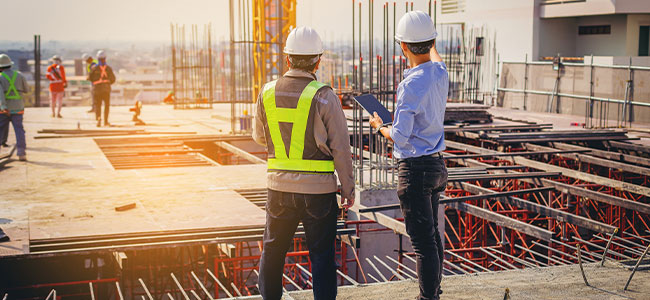
The Most Common Health and Safety Hazards on Construction Job Sites
Seven hazards frequently occur on construction sites. Here’s how recognizing and training workers on these dangers can significantly improve workplace safety and productivity.
- By David Brinkerhoff, Sylvia Fontes
- May 01, 2024
Physical hazards in construction sites are commonplace. They are just one of the many types of hazards construction workers can face, though.
Below are seven common hazards on construction sites and examples of each. Use this guide to compare against your own construction site safety plan. We hope you don’t … but you may find some gaps in your plan that should be filled.
1. Physical hazards are environmental factors that can affect the health of your workers. Examples are falling or flying objects, temperature extremes, radiation exposure, and exposure to excessive noise or vibration levels.
a. Hard hats and safety helmets protect your head from falling objects and side impacts.
b. If the sound coming from a construction site can draw noise complaints from neighbors, imagine how it affects workers on the site. Over time, exposure to elevated noise levels can lead to hearing damage.
c. Studies investigating heat-related mortality outcomes among workers, found that the construction industry had consistently higher fatality rates related to heat stress as compared to other industries.
2. Chemical hazards are harmful substances, such as asbestos, lead, and other hazardous materials. Chemicals can pose serious health risks to workers, including respiratory issues, skin irritation, eye damage, and chronic illnesses like cancer. Workers must know how to understand material safety data sheets (MSDS), recognize the symbols associated with hazards, and wear necessary personal protective equipment (PPE) when working with chemical hazards.
Furthermore, chemical spills or improper disposal can have severe environmental consequences and lead to legal issues. Remember, too, that dust can be a chemical hazard. The threat isn’t always evident or easy to detect.
3. Biological hazards include exposure
to bacteria, viruses, and other health-compromising agents. While these are less common on construction sites, the identification of any existing biological hazards and asking workers not to come to the job site when sick can help prevent illness and lost work hours.
One special area of concern is soil contaminated with certain types of fungi. Failure to identify and mitigate mold can be hazardous not only to workers but also to the people who will occupy the site after construction.
This article originally appeared in the April/May 2024 issue of Occupational Health & Safety.